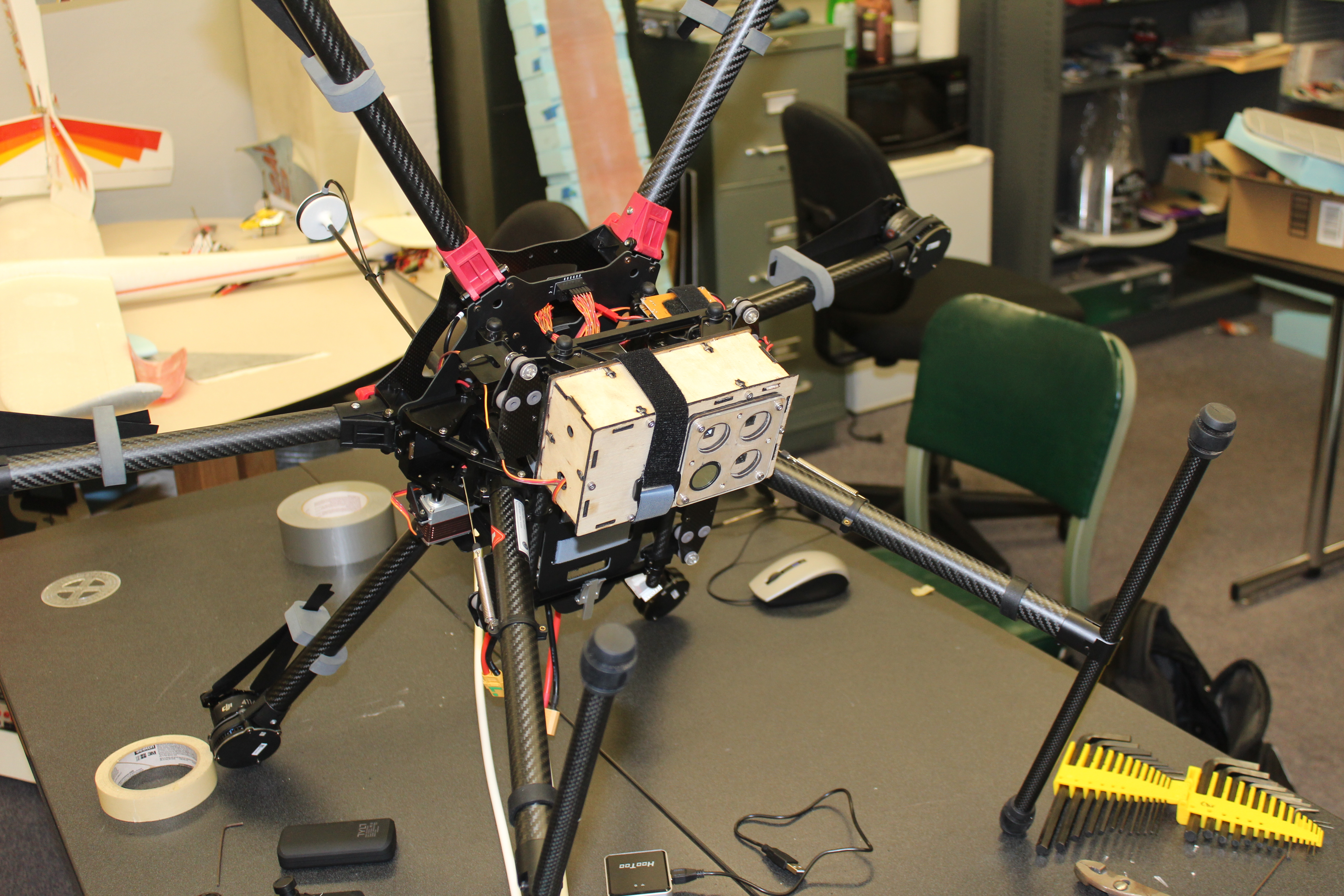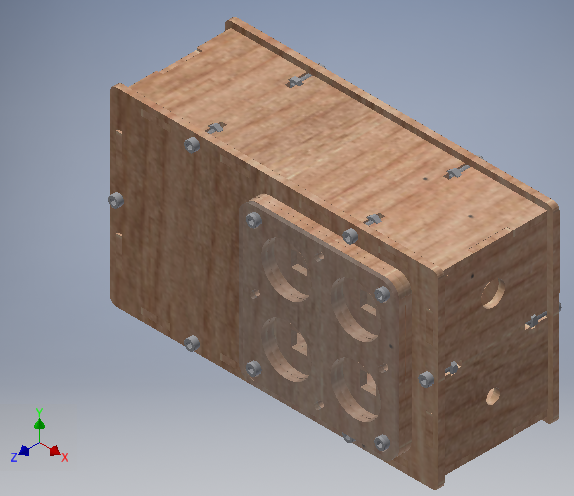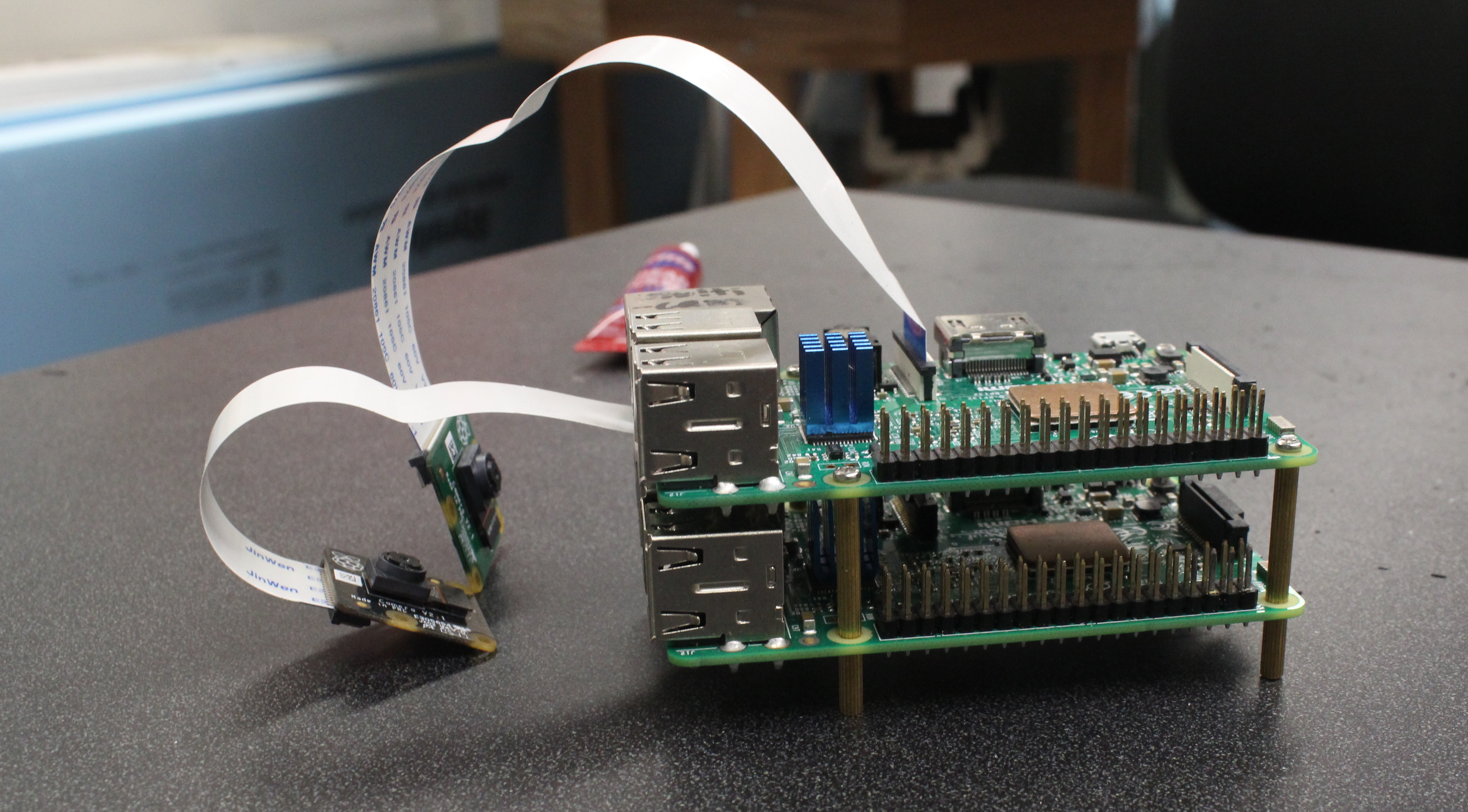Multi Spectral Camera First Iteration
Now that the camera is in its second iteration, I’m posting this to archive the first iteration’s data:
“Hailing from the Mississippi Delta, I have always been interested in agriculture. Recently, I was looking into ways to incorporate UAV’s into farming. While researching the topic, I discovered an industry known as “precision agriculture.” Wikipedia defines this field as “a farming management concept based on observing, measuring and responding to inter and intra-field variability in crops.” After reading further into the topic, I found that many companies are using multi-spectral imaging to evaluate crop health. This is especially useful for crop consultants who are always looking for ways to provide the best information to their customers – the farmers.
I realized that even though precision agriculture, and more specifically, multi-spectral imaging, is a relatively new area of research, it still has a large barrier to entry in the form of high camera costs. In fact, most consumer level multi-spectral agricultural cameras are close to $4000. To work around this problem, a graduate student, Christopher D. Simpson and I decided to build our own camera. Using a camera device created by ecologist Dr. Koen Hufkens as our model, we created a fully functioning multi-spectral camera.

As of right now, this camera has many similarities to Dr. Hufkens’ “TetraPi” project. To build the camera box, I used his FreeCad measurements and recreated the box in Autodesk Inventor. Dr. Hufkens’ model was slightly smaller than my liking, so I added an extra 5 mm of width to it. The box was then laser cut from 3mm 6-ply birchwood. It is held together by M3 bolts and wood-glue. For extra safety, Chris and I added a Velcro strap. I will include the Inventor files below.

The camera itself was originally created using one Raspberry Pi and a camera multiplexer created by IVmech Mechatronix. Sadly, the multiplexer was defective, and IVmech was not very keen on providing assistance. To workaround this issue, it was decided that two Raspberry Pi’s were to be used. With Chris’s help, I created a code that takes an picture upon receiving a signal on a GPIO pin on the Raspberry Pi. These images are then saved to a separate directory in the Pi.

As of right now, there are only two cameras in the system. One is a standard Raspberry Pi RGB camera, and the other is Raspberry Pi’s “NoIr” camera. We placed a NIR (near infra-red) filter in front of this camera to create a truly “multi-spectral” camera.
Once a multi-spectral image is taken, vegetative indices are used to evaluate crop health. The most popular of these indices is the Normalized Difference Vegetation Index, which shows the amount of photosynthetic activity occurring within plants. This metric is calculated by using the red and near infra-red bands of an image. The formula is as follows: NDVI = (NIR – red)/(NIR + red). Even though this is most popular vegetative index, it is definitely not the only one. To calculate NDVI and many other popular indices, I created a Matlab program that uses the camera’s images to create a color mapped, indexed image.
Currently, the camera and its respective programs are in their first iteration. Next, I plan to create a camera box that is more suitable for my current two-Pi design. Also, I plan to fine tune my vegetative index code so that it lines up two images automatically. In the future, I would like to create my camera program as an embedded software to lower boot times in the field. I will most likely do this with Raspberry Pi Zero’s so that I can make the camera box even smaller.
Files:
- Here is a zip file of my Inventor parts and the drawings for the camera’s first iteration. (Note: I used Inventor 2018. Any earlier release of Inventor will not be able to utilize these files. If needed, I can create STEP files of the parts).
- Here is my Matlab code for calculating various vegetation indices. (Note: This is the first iteration, and it is far from ideal. In addition, it uses the image processing toolbox in Matlab).”